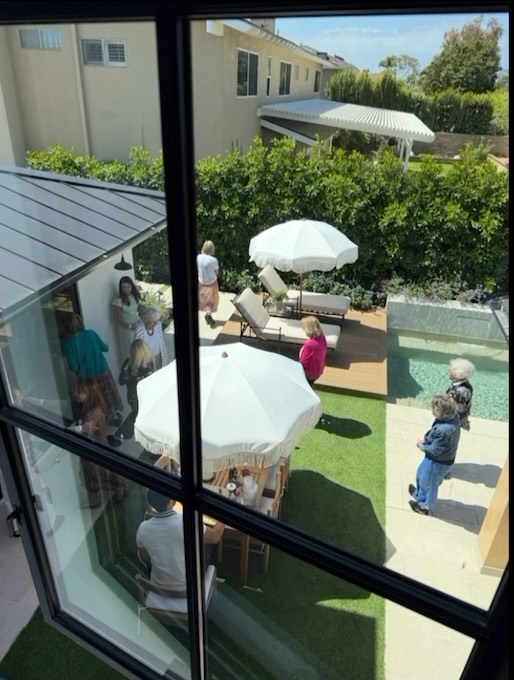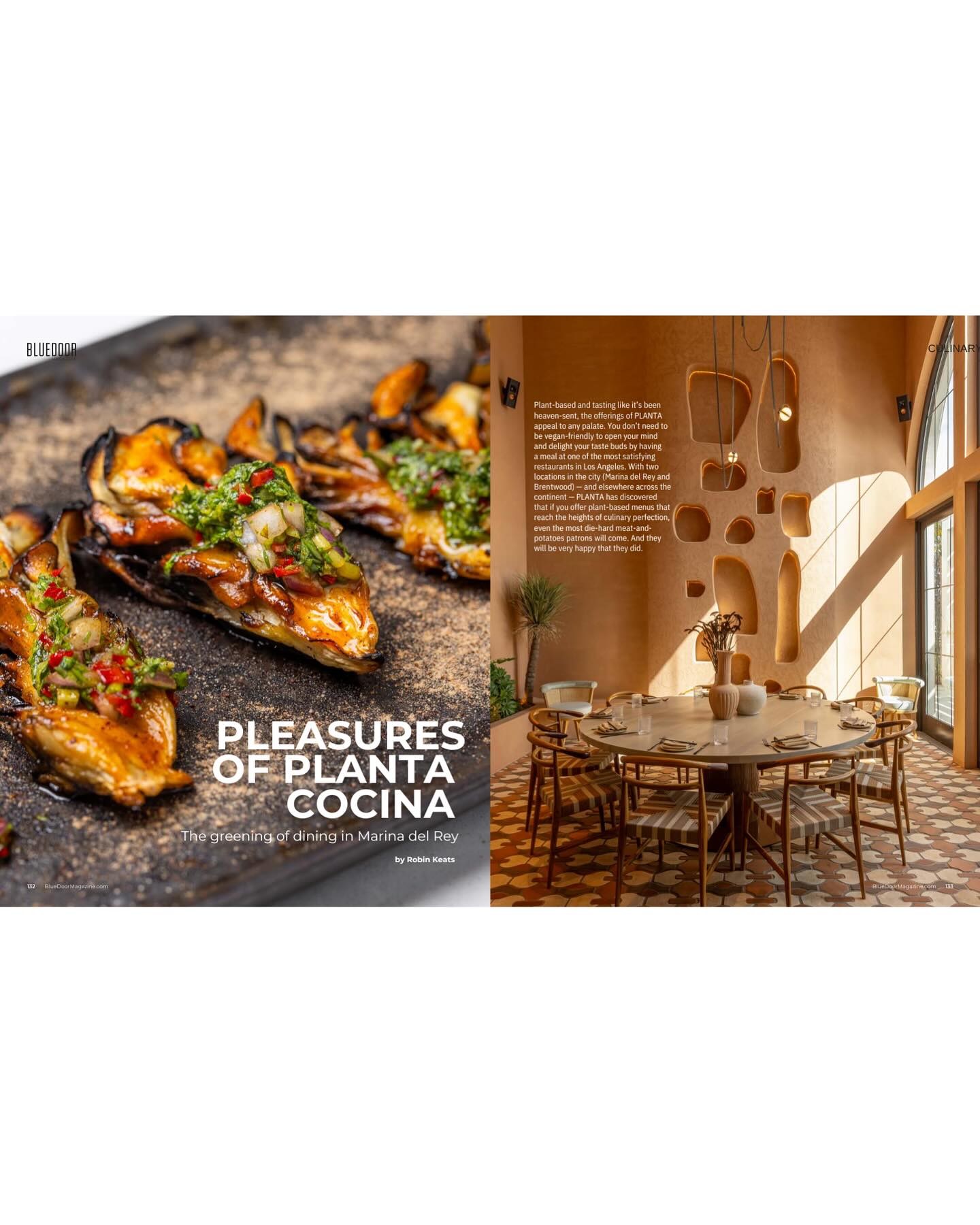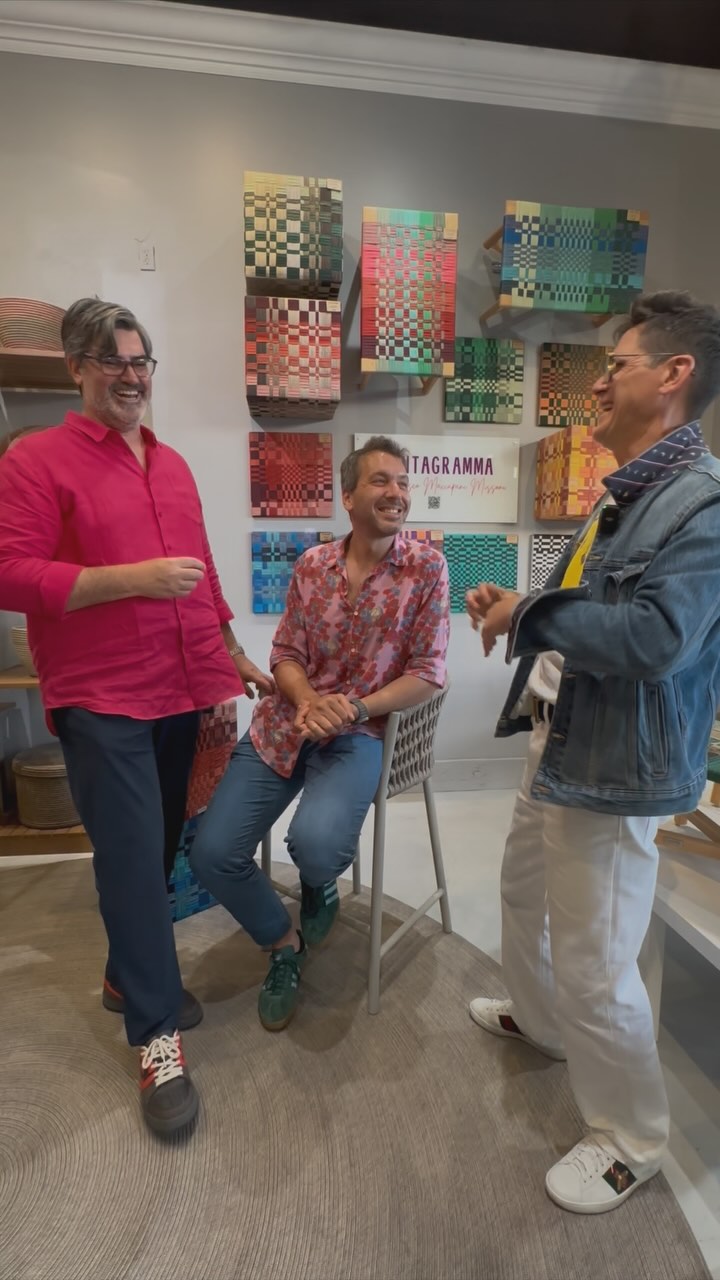Known internationally as a fashion designer, Yves Saint Laurent is also admired and influential for his eclectic taste in interiors.

Saint Laurent at home on rue de Solférino in Paris with the painting Composition dans l’usine (1918) by Fernand Léger, 1980s.
Yves Saint Laurent and partner Pierre Bergé were worldbuilders of an unparalleled caliber, tastemakers who approached each interior proj- ect with imagination and rigor, crafting grand spaces infused with personality and provenance. Connoisseurs in every sense of the word with a deep knowledge and appreciation for art and interior design, the two built and lived among a spectacular and carefully considered collection. In close collaboration with world-class designer Jacques Grange, they crafted private spaces full of wonder and enchantment.
Saint Laurent and Bergé took a very personal approach, collecting individual items that caught their eye, then figuring out how to combine them when they got home. Their homes included the Villa Oasis in Marrakech, Morocco; Château Gabriel (the dacha) in Deauville, France; and 55 rue de Babylone in Paris.
“We were lucky enough to be able to jump from one to the other and live as we wished in Paris, Normandy, Marrakech, and Tangier,” said Bergé. “We didn’t have a favorite house.”

55 rue de Babylone, Paris. Three paintings by Fernand Léger hang on the wall: Le Profil Noir, The Yellow Checkerboard and Composition dans l’usine. In the top left, the ghost of Giorgio de Chirico, while the stool in the foreground is by Pierre Legrain.

Château Gabriel, Deauville, France. The interiors of L’Innocent by Luchino Visconti, who decided
on the rows of doors, curtains, and chandeliers.
What set the duo’s design aesthetic apart from the stylish interiors of the day was its eclecticism. The interiors mixed Old Master paintings with postcards and Pop Art, and 19th-century European furniture with 20th-century design classics. Pieces from all periods formed part of this complex mix: a homoerotic ancient Greek marble male torso, a 19th-century sculpture of a bird from the Ivory Coast, a sculpture by Constantin Brancusi, a monumental tapestry by pre-Raphaelite Edward Burne-Jones, and paintings by Goya, French Romantic Theodore Géricault, Surrealist Giorgio de Chirico, and Cubist canvases by Picasso and Léger. Alongside these were a few contemporary pieces, including multi-colored Warhol portraits of Saint Laurent, painted in 1972.
“In France, we don’t have the same passion as in America for harmonizing,” Saint Laurent said. “This is because we have old rooms in old buildings that already have a personality. It’s a mish-mash, but still, it’s an expression of the times, and probably, a statement about myself.”
This rich collection of furniture, art, and objects which was amassed over more than five decades and gathered from every corner of the globe, is highlighted in Assouline’s recent title Yves Saint Laurent at Home. Featuring works by esteemed designer and close collaborator Jacques Grange, as well as photography by Marianne Haas, the book’s 240 pages are filled with the couple’s most enchanting spaces.

La Datcha at Château Gabriel, Deauville, France. View of the bathroom.
When Saint Laurent met and fell in love with Bergé in the late ‘50s, they defined the roles they would play for the next 40 years. Saint Laurent was the artist; Bergé was the ultimate manager-fixer who handled the business. “I instantly recognized his genius,” Bergé said after Saint Laurent’s death.
Bergé founded Yves Saint Laurent with the designer in 1961, when the two men were in a relationship. It was Bergé who encouraged Saint Laurent—a designer at Christian Dior when the two met in 1958—to set up his own house. Sales at YSL soared under the guidance of Bergé and the genius of YSL, primarily due to the inclusion of ready-to-wear clothing—anyone remember Rive Gauche?

Jacques, Yves’s French bulldog Moujik and Yves in the winter garden of Château Gabriel in Deauville, Normandy, France, 1982.
The two separated as lovers in 1976, but they remained friends and business partners. Saint Laurent died in 2008. Bergé devoted himself to preserving the designer’s legacy. Bergé once said that Saint Laurent “transcended the merely aesthetic in fashion and penetrated social territory.”
Bergé died in 2017.
In 2018, rooms from the homes were recreated at Sotheby’s Paris for an auction of nearly 1,000 pieces from the collection. Pierre Bergé: From One Home to Another drew enthusiastic crowds from around the world to Sotheby’s Paris. The sale captured the imagination of a diverse bid- ding base, saw records achieved for several artists, and was 100 percent sold for a total of $32,375,439, nearly four times the pre-sale high estimate.
With their boho-luxe style and hedonistic atmosphere, the 1970s homes of Yves Saint Laurent and Pierre Bergé still influence design today.

Villa Oasis, Marrakech, Morroco. An armchair designed and painted by Saint Laurent for his first house in the medina.















![🎨✨ Color meets creativity at the coast ✨🎨
Join Bloor Door Magazine and Tidelli Outdoor Living @tidellioutdoor for an unforgettable evening with Francesco Maccapani Missoni @fmaccapani , the visionary behind the Pentagramma Collection.
📍 Tidelli Outdoor Living - Orange County
7876 East Coast Highway Newport Beach, CA 92657
🗓 Wednesday, May 21 | 🕕 6–7:30 PM (Doors at 5:30)
Expect:
🌈 A deep dive into the art of combining color
🎤 Live talk + Q&A with Francesco
👀 Behind-the-scenes of the Pentagramma Collection
🍸 Light bites + good vibes
Come get inspired by bold rope hues, timeless design, and Italian soul.
🎟 RSVP now → [link in bio]
#Missoni #TidelliOutdoorLiving #BloorDoorMagazine #DesignEvent #FrancescoMissoni #ColorStory #NewportBeachEvents #InteriorInspo #DesignTalks](https://bluedoormagazine.com/wp-content/uploads/2024/03/499443917_18279427363301802_778893880365426415_n.jpg)



